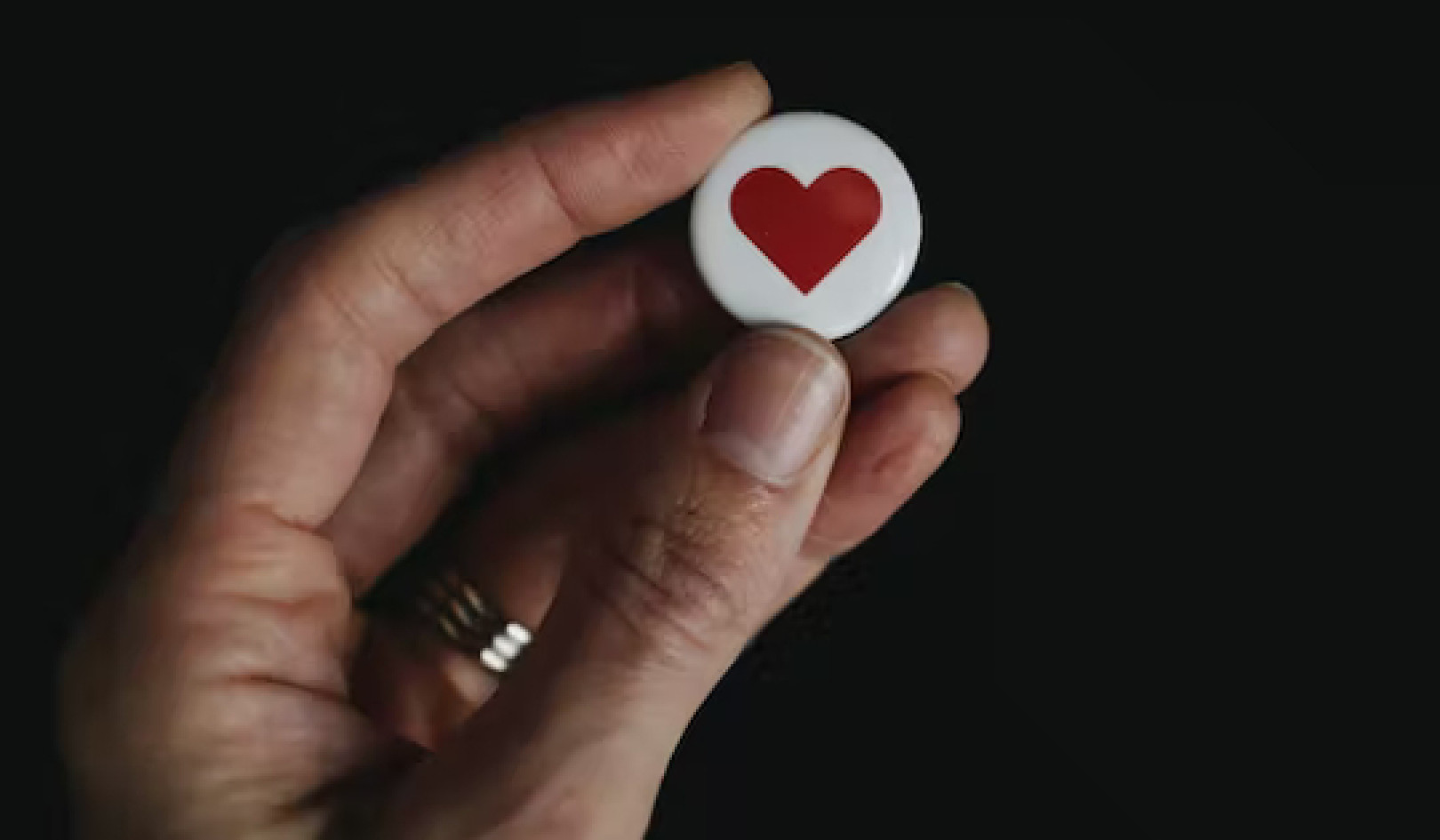
Image by WikimediaImages
Ahh. . . . the Reese’s Peanut Butter Cup. My childhood favorite. My Halloween trick-or-treating success was measured by how many of these gold- or orange-foiled treats I received. I counted the mini gold-foiled cups double because somehow the chocolate to peanut butter ratio was more to my liking than in the full-size version.
When Hershey’s launched their ad campaign, “There’s no wrong way to eat a Reese’s,” I was more than happy to research this bold claim. I tried small bites, eat-it-whole bites, chocolate-only bites, peanut butter–only bites, finely sliced bites, pie-shaped bites, hands-free bites, lick-the-wrapper bites, lick-your-finger bites, frozen bites, and slightly melted bites. My scientific investigation concluded that Hershey’s was right: There was no wrong way (except if mom discovered you were “experimenting” before dinner).
However, I discovered that some ways were better ways than others, and that not all Reese’s were created equal. There was something different about those gold-foiled minis that were cut into quadrants. They were better than the rest—and eating them this way definitely cut down my overall consumption. A win-win for everybody, including Mom.
Ethics and Happiness: Is There A Wrong Way To Do Anything?
The Reese’s slogan raises a more poignant question: Is there a wrong way to do anything? Is there a wrong way—or even a right way—to live? If so, does it make a difference in terms of whether you are happy?
Questions of right and wrong, good and bad are the essence of ethical questions. The Buddha included ethical conduct as one of the three areas of the Eightfold Path that leads to the end of suffering; he believed ethical and virtuous conduct was critical for living a life of extraordinary happiness. Apparently, positive psychologists have come to a similar conclusion.
Positive Psychology and The Ethical Life
Positive psychologists Christopher Peterson and Marty Seligman approach the question of ethics in two ways. First, they examine which qualities are associated with goodness and the good life across cultures. They refer to these qualities as virtues and consider them strengths people can cultivate to increase a sense of meaning and life satisfaction. [Character Strengths and Virtues: A Handbook and Classification, by Christopher Peterson and Marty Seligman]
Second, positive psychologists have studied the gratifications, which are similar to pleasures at first glance but are quite different at their core. Both involve a sense of enjoyment. Pleasures bring enjoyment through the senses. On the other hand, gratifications are activities we engage in that bring us a sense of satisfaction, meaning, and purpose—because they are associated with doing something good. Thus eating chocolate brings pleasure; buying chocolate for needy children at Christmas time is gratifying. Both may make us feel good, but for very different reasons. Positive psychologists propose that happiness involves pursuing virtuous and gratifying activities rather than just life’s pleasures.
Accentuate the Positive: Gratitude and Happiness
Here’s my favorite happiness secret. If you think you may not be cut out for mindfulness, crazy wisdom, or compassion, then gratitude may be the perfect practice for you. Few things can change my state of mind for the good more quickly than making a list of the things for which I am thankful, and there is a good biological reason for this.
Our brain—specifically the limbic system part—is hardwired to focus on danger and all things negative. Why? These things are more likely to kill us. So, bad memories and thoughts naturally stick with us; the good ones easily slip away. Think Velcro for the negative; Teflon for the positive. So you have to put some effort into reminding the brain to track positive events in your life, or it will miscalculate how bad things really are in your life.
Eliminate the Negative: Don't Focus on the Bad Stuff
In modern society, the problem is that our modern world isn’t filled with the physical dangers our brains were designed to protect us against, yet the brain processes psychological threats in the same way it did a saber-toothed tiger. Unfortunately, our brains will naturally focus on all of the negatives unless we train it not to.
If we can calm our inner lizards and look at the big picture, most of us have far more good than bad in our lives (consider hot water, plentiful food, minimal physical danger, medical care, electricity, cars, air conditioning, the Internet, chocolate, etc.), but the brain will naturally focus more on the bad (such as an unkind comment, work stress, or financial issues) unless we remind ourselves otherwise.
Latch On to the Affirmative: Keep A Daily Gratitude Journal
A growing body of research indicates that simple exercises like writing down what you are grateful for each day can have impressive health benefits. More so than compassion, optimism, or hope, gratitude has one of the strongest links to life satisfaction and mental health. Grateful people experience more positive emotions, such as happiness, joy, and enthusiasm.
In one U.K. study, researchers found that keeping a daily gratitude journal for two weeks increases participants’ sense of well-being, sleep, optimism, and blood pressure. In another, depressed participants who wrote and personally delivered a note of appreciation to someone they had not properly thanked reported improved depressive symptoms for a month.
When comparing gratitude journaling to not journaling at all or journaling about one’s deepest thoughts and feelings, gratitude journaling significantly improved participants’ mental health, whereas expressive journaling and not journaling had no effect. In other words, if you are journaling with the purpose of improving your mood, focus on what you are thankful for, or don’t bother.
If I find myself in a low mood, gratitude journaling is one of the first things I use to lift my spirits. For everyday stress, a list with twenty things I am grateful for seems to do the trick. For Thanksgiving, I try to list one hundred things I really appreciate about my partner and kids; the first fifty are easy. After that, I have to dig a bit more, and that really helps to reignite connection and appreciation. It’s that push beyond the obvious first few items of thanks that helps the brain recalculate the pros versus cons in your life. So let’s try it.
Exercise: Gratitude Journal
Download this worksheet from Chapter 8 of the book at www.mindfulnessforchocolatelovers.com.
Step 1
List twenty things you are most grateful for in this moment as fast as you can; notice whether your mood seems to lift at a particular point in the process.
Step 2
Take a moment to go down the list and thank someone or something—God, the universe, a person, or your lucky stars—for each one. Stay with each one until you actually feel the warmth of gratitude in your heart.
Step 3
Once you are done, notice how you feel about yourself and life. Do you feel more hopeful? Less stressed? Happier?
Don't Mess with Mister In-Between: Appreciate What Is Going Right
Every time I do this exercise, I am surprised at how much more at peace I am with my life. Especially on those days when it seems that everything is going wrong, when I pause to appreciate the handful of things that are going right—or at least have not fallen apart—my whole demeanor changes.
Peterson and Seligman classify gratitude under spirituality and transcendence. So they are not referring to the socially polite habit of saying “please” and “thank you.” They are referring to a heartfelt sense of appreciating the kindness of another, the good things we have in life, the beauty that surrounds us. No matter how little you have or how bad things are in life, you can always find something to be grateful for.
There is a little mind trick that happens when you begin to notice all the things in your life you are grateful for: suddenly, life is richer. The glass is no longer half empty or half full: it is running over. This is perhaps the easiest step in moving forward to a life of extraordinary happiness.
Exercise: Creating Your Personal Gratitude Habit
Download this worksheet from Chapter 8 of the book at www.mindfulnessforchocolatelovers.com.
Becoming a more grateful person is relatively easy if you can find a way to carve out one to five minutes a day to reflect on the things in your life that you appreciate.
Step 1
Identify a current activity that might be a good time to practice gratitude. Common examples include grace before any meal, upon rising, before going to bed, and exchanging gratitude lists with a child or partner before bed.
Option No. 1:
Option No. 2:
Step 2
Implement Option No. 1 for a week. At the appointed time, take a moment to think about or write down everything you are thankful for in that moment.
You can use mindfulness to notice the little examples of goodness around you: sunshine through the window, a comfortable chair, or a delicious meal. You can also take a moment to be thankful for the bigger things: the people you love, a job, a comfortable home with air conditioning and central heating—whatever comes to mind that day.
Step 3
If your first option was not a good fit, try your second option or even a third option until being grateful becomes a part of your daily routine.
Step 4
Once you have begun to integrate silent gratitude into your life, try to add telling at least one other person that you appreciate them or something they do each day. Do not be surprised if you find your relationships improve dramatically.
The Attitude Of Doin' Right: One Last Word On Ethics
“Anything goes.” “It’s all good.” There is some truth in these familiar expressions. But these do not convey the whole story about what is good. Some choices and actions lead to greater “goods” and happiness than others.
Happy people tend to make these choices: when faced with options, they choose to act with virtue and strength to choose gratifying action over simple pleasure. Making virtuous decisions is about trying to choose the best “good”—whatever that may look like in a given situation—when given the option.
Each time you strive toward the good, you take a step closer to happiness. Most of us have rebelled against a large number of classic virtues—such as temperance, perseverance, kindness, citizenship, love of learning, or forgiveness—because these were forced on us as children, often for the sake of others.
Ultimately, if you do not—of your own free will—seek to become as virtuous as you can, you cannot find extraordinary happiness. You will have to settle for the ordinary. The paradox is that when you choose virtuous and ethical behavior for its own sake—for your own sake—you finally find freedom.
©2019 by Diane R. Gehart. All Rights Reserved.
Excerpted with permission from Mindfulness for Chocolate Lovers.
Publisher: Rowman & Littlefield. www.rowman.com.
Subtitles adapted by InnerSelf
from the song: Accentuate the Positive
Article Source
Mindfulness for Chocolate Lovers: A Lighthearted Way to Stress Less and Savor More Each Day
by Diane R. Gehart Ultimately, this book invites you to play. To laugh. To love. To heal old heartbreaks. To overcome what was once impossible. To open your heart to life and all it has to offer: white, milk, and dark. The stresses of modern life often create the illusion that life is hard, painful, and lonely. You are only a few bites away from an entirely different approach to living a sweeter life.
Ultimately, this book invites you to play. To laugh. To love. To heal old heartbreaks. To overcome what was once impossible. To open your heart to life and all it has to offer: white, milk, and dark. The stresses of modern life often create the illusion that life is hard, painful, and lonely. You are only a few bites away from an entirely different approach to living a sweeter life.
(Also available as a Kindle edition.)
More books by this author
About the Author
 Diane R. Gehart, Ph.D., is an award-winning professor of Counseling and Family Therapy at California State University, Northridge, and author of numerous best-selling books for professionals, including Mindfulness and Acceptance in Couple and Family Therapy and Mastering Competencies in Family Therapy. She maintains an active psychotherapy practice in the Los Angeles area, working with adults, couples, and families to find effective and meaningful ways to address their greatest life challenges—while having some fun along the way. You can follow her on YouTube. Learn more: www.dianegehart.com and www.mindfulnessforchocolatelovers.com.
Diane R. Gehart, Ph.D., is an award-winning professor of Counseling and Family Therapy at California State University, Northridge, and author of numerous best-selling books for professionals, including Mindfulness and Acceptance in Couple and Family Therapy and Mastering Competencies in Family Therapy. She maintains an active psychotherapy practice in the Los Angeles area, working with adults, couples, and families to find effective and meaningful ways to address their greatest life challenges—while having some fun along the way. You can follow her on YouTube. Learn more: www.dianegehart.com and www.mindfulnessforchocolatelovers.com.

























